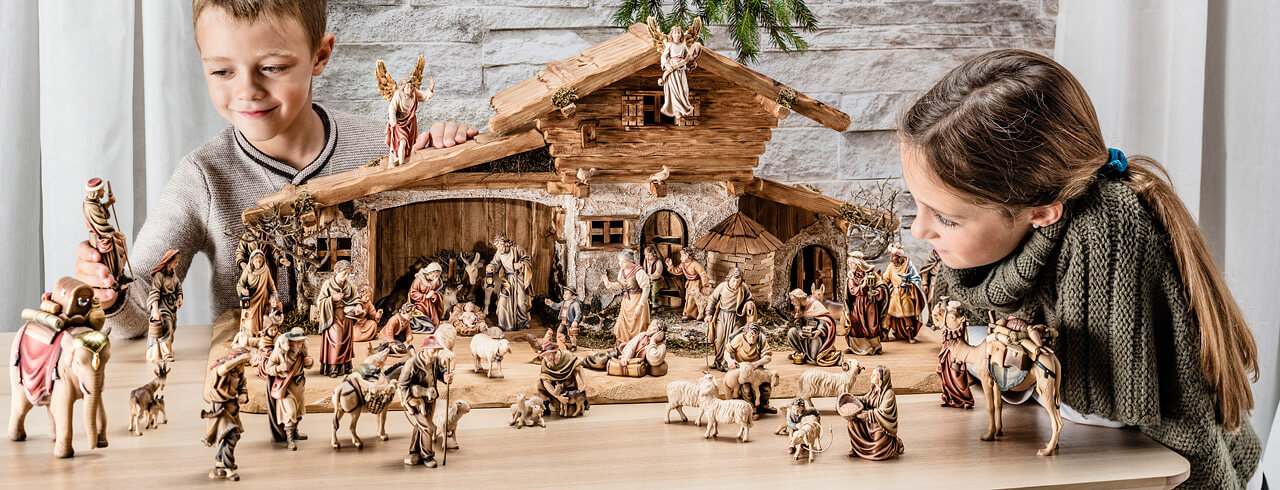
If you’re displaying a variety of painted or carved nativity sets each year at Christmas and throughout the Christmas season you’re part of an ancient tradition that dates back many centuries.
If you’re displaying the carving of a piece or plaster display (or creche) at Christmas, you’re part of a precious Christmas custom that goes back to the past. Learn about the history of Nativity creches.
Tradition
Legend says that saint Francis from Assisi founded his first creche when the Nativity scene was performed a live performance that comprised an animal, a manger, and a donkey, all in the context of a Christmas Eve Mass he planned during his visit to this town, which is located in the mountains of Grecia.
St. Bonaventure wrote about the evening’s events in the book of St. Francis, “A certain valiant and veracious soldier, Master John of Grecio, who, for the love of Christ, had left the warfare of this world, and become a dear friend of this holy man, affirmed that he beheld an Infant marvelously beautiful, sleeping in the manger, Whom the blessed Father Francis embraced with both his arms as if he would awake Him from sleep. “
Nativity at Christmas
The first time a Nativity scene was designed and adopted, the custom was adopted and was adopted by many. In the span of a century or so, virtually every church in Italy such as, for example, was a part of the custom. In time, statues of animals and live people were used which eventually led to the display of the Nativity at home which is so prevalent in Christmas celebrations even today.
Creches may not be historically accurate since they depict both shepherds and they depict the Magi on the scene shortly after Christ arrived. It is however true that the Gospel of Matthew indicates that the Magi went along with the star to Jesus’s house for at most a year after Christ’s birth the Christians get their inspiration from famous characters from the Christmas story and all in one place.
There are many scholars believe that the first creche to be found in Italy is comprised of marble statues that were kept in Roma’s Basilica di Santa Maria Maggiore and are believed as the creation of the artist Arnolfo di Cambio The statues are believed to be having been created at various times that began in 1284 and closing in 1289.
The French area of Provence is known as the region where artisans make saints (little saints) miniature clay figures made by hand. Similar to other regions, nativity-themed home scenes have been very popular in this region of France however, they were usually intricate and made of costly materials, making them far too expensive for families of a typical size. In the course of the French Revolution, they were virtually removed.
In 1797, Jean-Louis Lagnel began to create figures of the Nativity made of clay, making them accessible to all. Later in the 20th century, Therese Neveu introduced the practice of firing clay figurines to improve their strength, leading to the Santons that we have today. They are located in the Musee du Santon et des Traditions de Provence is home to one of the largest collections of Santons. It’s also where you’ll be able to see the world’s tiniest creche, as described by the Guinness Book of World Records with 39 Santons to be exact.
Tomas Kryza
The Guinness Book of World Records refers to the creche designed by Tomas Kryza (1838-1918) as the biggest of its kind. An expert in stocking weaving from the city of Jindrichuv Hradec which is now part of the Czech Republic, Kryza spent 60 years developing the grand display that features 1389 characters from human beings and animals. Kryza started with his Nativity scene. Later, during the years to follow, Kryza created more creches. It is now part of the exhibition in Jindrichuv Hradec that also features other Biblical themes and also scenes from life as it was during the 19th century.

